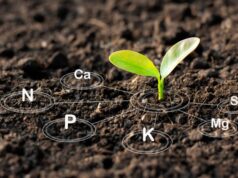Poly house farming is a modern agricultural technique that has become popular in recent years due to its ability to increase crop production and quality. Poly house farming is the practice of growing crops inside a greenhouse-like structure made of plastic or other synthetic materials. This technique is beneficial for small and large-scale farmers because it allows them to grow crops throughout the year and protect them from pests and weather conditions.
Advantages of Poly House Farming
- Year-Round Crop Production: Poly house farming allows farmers to grow crops throughout the year, even in areas with harsh weather conditions. This is possible because poly houses provide a controlled environment that can be customized to the specific needs of each crop. For example, temperature, humidity, and light can be adjusted to create optimal growing conditions. This means that farmers can harvest crops several times a year, leading to increased profits.
- Improved Crop Quality: Poly house farming provides a controlled environment for crops, which results in higher crop quality. For example, the use of drip irrigation systems ensures that crops receive consistent water and nutrients, leading to healthier plants and higher yields. Additionally, poly houses protect crops from extreme weather conditions like heavy rain, hail, or high winds, reducing the risk of damage to the crops.
- Reduced Water Usage: Poly house farming is a water-efficient method of agriculture because it reduces water loss due to evaporation. In traditional agriculture, much of the water applied to crops is lost to the atmosphere before it reaches the roots. In contrast, poly houses retain water inside the structure, allowing farmers to use water more efficiently. Furthermore, drip irrigation systems provide precise amounts of water directly to the plants, reducing water waste and minimizing the need for manual labor.
- Protection from Pests and Diseases: Poly houses provide a physical barrier that helps to keep pests and diseases at bay. This reduces the need for harmful pesticides and chemicals that can harm the environment and the health of the farmers. Instead, farmers can use biological control methods like beneficial insects and biopesticides to control pests and diseases. This results in healthier crops and safer food for consumers.
- Increased Yields: With the controlled environment provided by poly house farming, farmers can achieve higher yields than with traditional farming methods. For example, farmers can use trellising techniques to increase the number of plants per unit area, resulting in more crops per harvest. Additionally, the controlled environment allows farmers to harvest crops at optimal times, resulting in higher quality produce.
- Cost-Effective: Poly house farming can be a cost-effective way to grow crops, especially for small-scale farmers. The use of low-cost poly houses made from locally available materials like bamboo and plastic sheets can reduce the initial investment required. Additionally, the controlled environment and reduced water usage can lead to lower operating costs over time.
- Climate Resilience: Poly house farming can help farmers adapt to climate change by providing a stable environment for crops. As extreme weather events become more common, poly houses can protect crops from damage and ensure a consistent harvest. This is particularly important for farmers in regions prone to drought, flooding, or other weather-related disasters.
Looking for Poly house material? Buy here
Types of Poly Houses
There are various types of poly houses, each designed to suit different farming needs. Some of the most common types include:
- Low-Cost Poly Houses: These are simple structures made of locally available materials like bamboo and plastic sheets. They are ideal for small-scale farmers who want to try out poly house farming without investing a lot of money.
- Low Tunnel Poly House: Low tunnel poly houses are the simplest and most cost-effective type of poly house. They are usually made with flexible plastic sheets or shade cloth and supported by hoops made of PVC pipes or metal rods.
- Walk-In Poly Houses: These structures are large enough to allow farmers to walk into them and tend to the crops. They are commonly used for growing vegetables like tomatoes and cucumbers.
- High Tunnel Poly House: High tunnel poly houses are larger and taller than low tunnel poly houses, providing more space and better ventilation for crops. They are typically made with galvanized steel frames and covered with polyethylene plastic sheets.
- Quonset Poly House: Quonset poly houses are round, tunnel-shaped structures made of galvanized steel frames and covered with polyethylene plastic sheets. They are easy to assemble and provide good ventilation and natural light for crops.
- High-Tech Poly Houses: These are advanced structures that use modern technology to provide a controlled environment for crops. They are ideal for commercial farming and are often used to grow high-value crops like strawberries and exotic flowers.
- Gothic Arch Poly House: Gothic arch poly houses are similar to quonset poly houses but have a pointed arch shape that provides more headroom and better ventilation for crops. They are made of galvanized steel frames and covered with polyethylene plastic sheets.
- Gable Poly House: Gable poly houses are large, peaked structures made of galvanized steel frames and covered with polyethylene plastic sheets. They provide ample headroom and natural light for crops, and can be equipped with heating and cooling systems for year-round production.
Important Considerations for Poly House Farming
- Site Selection: Choose a location with a flat terrain and ample water supply. Ensure that the site receives adequate sunlight and is not exposed to strong winds.
- Design and Construction: Determine the type of poly house that best suits your farming needs and budget. Choose the right materials and construct the poly house according to the design.
- Crop Selection: Choose crops that are suitable for poly house farming. Vegetables like tomatoes, cucumbers, and peppers are popular choices.
- Soil Preparation: Prepare the soil by removing weeds and adding organic matter like compost and manure.
- Irrigation: Install a drip irrigation system to ensure that the crops receive adequate water.
- Pest and Disease Control: Use biological methods like beneficial insects and biopesticides to control pests and diseases.
- Harvesting and Marketing: Harvest the crops at the right time and market them in local markets or supermarkets.
Starting Poly House farming?
Here is step by step approach you should be taking.
- Conduct a feasibility study: Before starting a poly house farming operation, it is important to conduct a feasibility study to determine if the business is viable. This study should consider factors such as market demand, location, cost of inputs, and expected yields. It is important to research the types of crops that are best suited for poly house farming in your area, and assess the potential profitability of growing those crops.
- Obtain funding: Starting a poly house farming operation requires an initial investment, which can be significant. The funding can come from a variety of sources, such as personal savings, bank loans, or grants. Farmers should research and explore all available options to determine the best source of funding for their operation.
- Select a suitable location: Poly house farming requires a level, well-drained site that receives plenty of sunlight. The site should be easily accessible for transportation of materials and harvest of crops. Additionally, the location should have access to a reliable source of water for irrigation.
- Design and construct the poly house: The design of the poly house will depend on the type of crops being grown and the specific environmental conditions required. There are many types of poly houses available, from simple structures made of bamboo and plastic sheeting to more complex designs made of metal and glass. The poly house should be designed to provide optimal growing conditions, such as proper ventilation, temperature control, and pest management.
- Choose the crops to grow: The crops chosen for poly house farming will depend on market demand, environmental conditions, and the farmer’s preferences. High-value crops such as tomatoes, peppers, cucumbers, and strawberries are popular choices for poly house farming. It is important to select crops that are well-suited for poly house farming and have a strong market demand.
- Install irrigation and other systems: Poly house farming requires a reliable and efficient irrigation system. Drip irrigation systems are commonly used in poly house farming because they deliver water and nutrients directly to the roots of the plants. Additionally, other systems such as heating, cooling, and lighting may be necessary depending on the specific crop requirements.
- Monitor and maintain the poly house: Once the poly house is in operation, it is important to monitor the crop growth and environmental conditions regularly. This allows farmers to identify and address any problems quickly before they affect the crop. Maintenance tasks such as cleaning, repairing, and replacing equipment should be performed regularly to ensure the longevity and optimal performance of the poly house.
Looking for Poly house material? Buy here
Government of India Schemes and Subsidies for Poly House farming
The government of India provides various schemes and subsidies for promoting poly house farming in India. Farmers can avail financial assistance for setting up of poly houses under these schemes, which can help them in increasing their crop yields, extending their growing season, and protecting their crops from adverse weather conditions, pests, and diseases.
- National Horticulture Mission (NHM): The National Horticulture Mission is a centrally sponsored scheme aimed at promoting horticulture development in India. Under this scheme, financial assistance is provided for setting up of poly houses, including low-cost poly houses, walk-in poly houses, and high-tech poly houses. The assistance is provided to farmers in the form of subsidies ranging from 50% to 75% of the cost of poly house construction.
- Rashtriya Krishi Vikas Yojana (RKVY): The Rashtriya Krishi Vikas Yojana is a government scheme aimed at promoting agricultural growth and development in India. Under this scheme, financial assistance is provided for setting up of poly houses, including low-cost poly houses, walk-in poly houses, and high-tech poly houses. The assistance is provided to farmers in the form of subsidies ranging from 50% to 75% of the cost of poly house construction.
- Pradhan Mantri Fasal Bima Yojana (PMFBY): The Pradhan Mantri Fasal Bima Yojana is a government scheme aimed at providing crop insurance to farmers. Under this scheme, farmers can insure their crops against natural disasters, pests, and diseases. The insurance premium is subsidized by the government, and farmers can avail a discount on the premium if they use poly houses for crop production.
- National Agricultural Development Programme (NADP): The National Agricultural Development Programme is a government scheme aimed at promoting agriculture development in India. Under this scheme, financial assistance is provided for setting up of poly houses, including low-cost poly houses, walk-in poly houses, and high-tech poly houses. The assistance is provided to farmers in the form of subsidies ranging from 50% to 75% of the cost of poly house construction.
- State-Specific Schemes: Many state governments in India have launched their own schemes for promoting poly house farming. For example, the Horticulture Department of Tamil Nadu provides financial assistance for setting up of poly houses, including low-cost poly houses, walk-in poly houses, and high-tech poly houses. The assistance is provided to farmers in the form of subsidies ranging from 50% to 75% of the cost of poly house construction.
To sum up, poly house farming is an innovative technique that offers many benefits to farmers over traditional farming methods. By providing a controlled environment for crops, poly houses can increase yields, improve crop quality, reduce water usage, and protect crops from pests and diseases. Moreover, poly house farming can be a cost-effective and climate-resilient way to grow crops, making it a valuable tool for modern agriculture.
Like this content? Share and help your friends!







